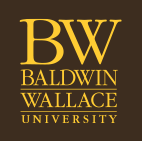The CRAAP Test - A Brief Video
This brief video was created by Lori Micho, a librarian at Johnson & Wales University:
The CRAAP Test!
The CRAAP test is a list of questions to determine if an information resource is reliable. CRAAP includes the following criteria:
Currency
- When was the information published or posted?
- Has the information been revised or updated?
- Is the information current or out-of date for your topic?
- Are the links functional? (for Web sites)
Relevance
- Does the information relate to your topic or answer your question?
- Who is the intended audience?
- Is the information at an appropriate level (i.e. not too elementary or advanced for your needs)?
- Have you looked at a variety of sources before determining this is one you will use?
- Would you be comfortable using this source for a research paper?
Authority
- Who is the author/publisher/source/sponsor?
- Are the author's credentials or organizational affiliations given?
- What are the author's credentials or organizational affiliations?
- What are the author's qualifications to write on the topic?
- Is there contact information, such as a publisher or e-mail address?
- Does the URL reveal anything about the author or source? examples: .com .edu .gov .org .net
Accuracy
- Where does the information come from?
- Is the information supported by evidence?
- Has the information been reviewed or refereed?
- Can you verify any of the information in another source or from personal knowledge?
- Does the language or tone seem unbiased and free of emotion?
- Are there spelling, grammar, or other typographical errors?
Purpose
- What is the purpose of the information? to inform? teach? sell? entertain? persuade?
- Do the authors/sponsors make their intentions or purpose clear?
- Is the information fact? opinion? propaganda?
- Does the point of view appear objective and impartial?
- Are there political, ideological, cultural, religious, institutional, or personal biases?
(developed at California State University at Chico)
Popular vs. Scholarly Articles
This video describes the many differences in content and intended usage for popular magazines, trade publications, opinion publications and scholarly (peer-reviewed) journals:
Evaluating Sources

It is very important to be able to determine the credibility and relevancy of information, especially when used for research in higher education. College students are typically required to use sources that meet certain criteria for scholarship, when researching information for papers and presentations.
The Association of College and Research Libraries includes evaluation of sources in the Information Literacy Competency Standards for Higher Education.
Outcomes Include:
- Examines and compares information from various sources in order to evaluate reliability, validity, accuracy, authority, timeliness, and point of view or bias.
- Analyzes the structure and logic of supporting arguments or methods.
- Recognizes prejudice, deception, or manipulation.
- Recognizes the cultural, physical, or other context within which the information was created and understands the impact of context on interpreting the information.
